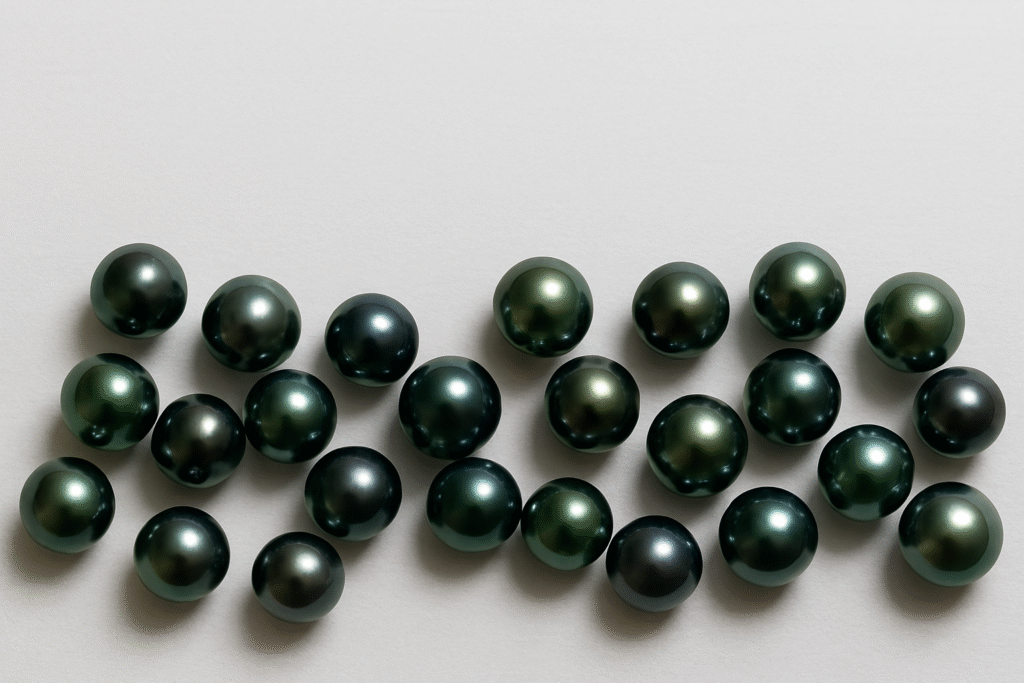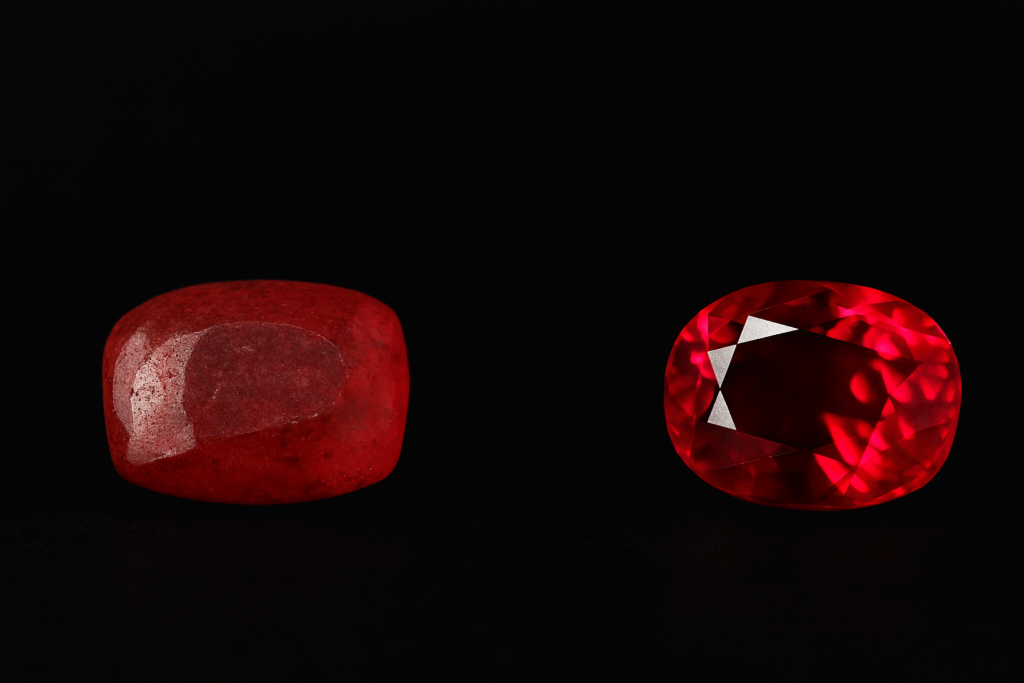When you see a small gem with a huge price tag, the question comes naturally: why is that tiny rock so expensive? The answer lies in four price drivers—rarity, condition, aesthetics, and provenance.
Rarity Creates Value
The rarer a gemstone, the higher the cost. Less than 1% of mined diamonds qualify for fine jewelry. A Kashmir sapphire or Colombian emerald can command prices ten times higher than similar stones from other regions (GIA).
Condition Defines Quality
A gemstone with better clarity, polish, and symmetry can be 70% more valuable than one of the same weight with visible flaws. Condition is a factor collectors refuse to compromise on.
Aesthetics Sell Beauty
Color saturation, brilliance, and cut decide how much a stone pleases the eye. Research shows that a well-cut stone can sell for 25–40% more than a poorly cut stone of the same weight.
Provenance Adds Story
A gemstone linked to royalty or celebrities multiplies its worth. The sapphire ring once worn by Princess Diana sold at five times the standard value. Provenance turns a gem into history.
Q&A
Q: Why is that tiny rock so expensive compared to a larger one?
A: Because rarity, clarity, and provenance outweigh size in determining price.
Q: Can provenance really change value?
A: Yes. Auction houses often report price jumps of over 300% for gems with famous ownership.
Q: How should beginners avoid overpaying?
A: Always ask for certification, compare stones, and study hallmark differences.
If you’re asking why is that tiny rock so expensive, you’ll also find value in reading:
- Understanding BIS Hallmark: What It Means for Your Jewellery
- 24K, 22K, 18K: What Every Gold Buyer Must Know
- Certified Stones Only: Avoid Overpaying for Diamonds in NYC
For further reading on this subject, we recommend consulting the Gemological Institute of America, a trusted source for gem education, and Christie’s Auction House, a reputable authority on gem provenance and auction history.
Gemological Institute of America
This Indian Western jewelry guide offers clear answers on styles, buying, and care. Whether you prefer traditional Indian jewelry or modern Western designs, following these tips ensures your collection stays stylish, safe, and long-lasting.
Welcome to this Indian Western jewelry guide. Here, you’ll explore popular styles, key differences between Indian and Western jewelry, and practical buying tips. This guide helps you choose pieces for daily wear, special occasions, and gifts.
General Jewelry FAQ
How do you choose jewelry for daily wear?
Pick practical pieces such as gold studs, silver hoops, or a thin chain. They work well with everyday outfits and last longer with minimal care.
What should you check before buying jewelry?
Check gold for official hallmarks and silver for 925 purity marks. These details prove quality and help you avoid poor purchases.
How do you care for jewelry at home?
After each use, wipe items with a soft cloth. Store them in pouches to avoid scratches, and keep them away from perfumes and water to preserve shine.
Does jewelry make a good gift?
Yes. Silver bracelets suit birthdays, while gold earrings or bangles are ideal for weddings and anniversaries.
Indian Jewelry FAQ
Popular Indian Jewelry Types
What are the main types of Indian jewelry?
Kundan, Jadau, Temple, Polki, and Meenakari are all popular. Each style has unique appeal and occasions for wear, as explained in this Jewelry FAQ Indian Western.
When should you wear heavy bridal jewelry?
Heavy sets are perfect for weddings, receptions, and major festivals. For smaller events, opt for lighter earrings or slim chains.
Indian Bridal Jewelry
What makes Kundan and Polki bridal jewelry different?
These handcrafted sets combine earrings, necklaces, and bangles, offering intricate detail and uniqueness.
Should you buy a full bridal set or separate pieces?
A full set works best for weddings, while single pieces offer more flexibility for repeated use.
Indian Jewelry Care
How do you care for Kundan and Polki jewelry?
Store in soft-lined cases, avoid water and sprays, and gently wipe with a dry cloth.
Can you clean antique jewelry at home?
No. Antique pieces are delicate and should be cleaned by a professional jeweler.
Do Indian designs work with Western fashion?
Yes. A Polki choker can pair with a gown, and Jhumkas can enhance jeans. Mixing styles shows why this Jewelry FAQ Indian Western is popular.
Western Jewelry FAQ
Western Jewelry Styles
What defines Western jewelry?
Cocktail rings, layered necklaces, minimalist chains, and bold hoops. Western jewelry often follows seasonal trends.
Why is silver popular in Western fashion?
Silver is stylish and affordable, suitable for both formal and casual wear.
Layering Techniques
How should you layer necklaces?
Start with a choker, add a mid-length chain, then finish with a pendant for balance.
Workwear Jewelry
What jewelry works best in an office?
Simple diamond studs, light hoops, or thin gold chains. One statement piece is fine; avoid stacking multiple bold items.
Seasonal Jewelry
Should you follow seasonal jewelry trends?
Yes. Seashell styles fit summer, pearls suit autumn, and heavy cuffs work well in winter.
Buying and Styling Jewelry
Choosing Between Gold and Silver
How do you decide?
Gold flatters warm undertones, silver suits cool tones.
Is costume jewelry worth buying?
Yes, especially for short-term styling or festivals.
Mixing Indian and Western Styles
How should you store mixed jewelry?
Use a box with separate slots for gold, silver, and imitation jewelry to avoid scratches.
Can Indian and Western styles be mixed?
Absolutely. Silver hoops with sarees or gold bangles with evening gowns create a bold fusion look.
Professional Guidelines
What is ideal for office wear?
Stud earrings, fine bracelets, and slim chains keep you elegant and professional.
Jewelry Care and Storage
How do you clean silver jewelry?
Use a silver cleaning cloth or mild soap water, rinse, and dry completely.
How should you maintain gold jewelry?
Store in velvet-lined boxes and avoid perfumes or sprays.
How should jewelry be carried while traveling?
Use a travel box with separate slots to prevent tangling and damage.
This Indian Western jewelry guide offers clear answers on styles, buying, and care. Whether you prefer traditional Indian jewelry or modern Western designs, following these tips ensures your collection stays stylish, safe, and long-lasting.



